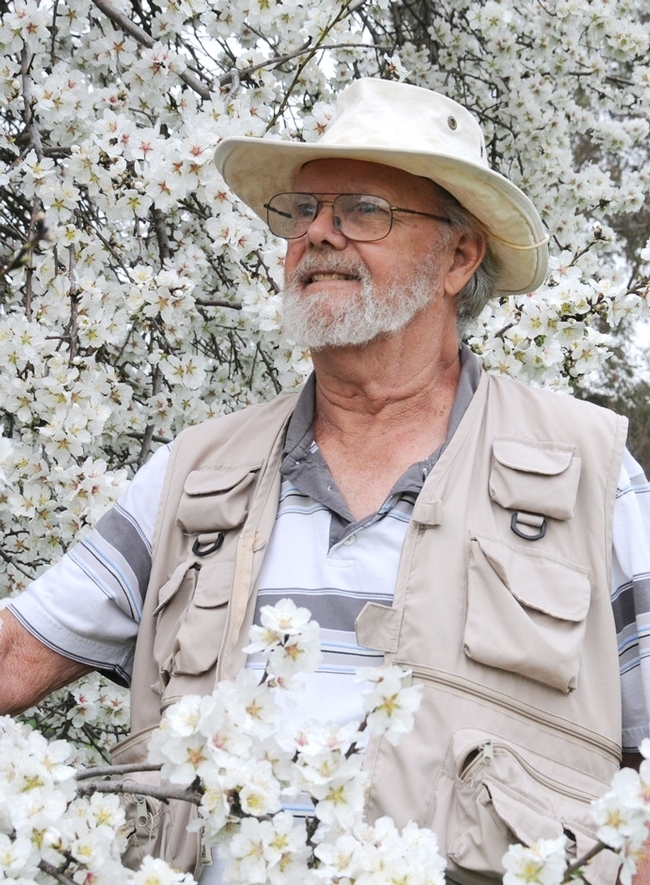
Ah, pillow fights, popcorn, and marathon movies on TV, you ask?
No. "Boys' Night Out" is when the longhorned male bees in our pollinator garden in Vacaville engage in sleepovers on our Mexican sunflowers (Tithonia) and other blossoms.
At night, the girls sleep inside their nests, and the boys cluster on flowers.
Lately, we've been admiring a trio of boys--Melissodes (possibly M. robustior, as identified by Robbin Thorp, distinguished emeritus professor of entomology at the University of California, Davis)--bunking down on a Tithonia. Every day, around sunset, they head over to the same flower, arrange themselves in comfortable sleeping positions (hey, quit kicking me), and it's nighty-night! When the sun rises, they vacate the bedroom. Sometimes it's earlier than planned, no thanks to buzzing bumble bees, carpenter bees and honey bees foraging around them and disturbing their beauty sleep. The nerve!
Other species of male longhorned bees--including Melissodes agilis and Svastra obliqua--sleep on flowers at night as well.
"Most frequently, the boy bee overnight clusters are single-species clusters," says Thorp, co-author of California Bees and Blooms, a Guide for Gardeners and Naturalists, with UC-affiliated authors Gordon Frankie, Rollin E. Coville, and Barbara Ertter.
Thorp, who holds a doctorate in entomology from UC Berkeley and taught entomology at UC Davis from 1964 to 1994, continues to "bee involved" in research, writings, bee identification and public outreach. He teaches annually at The Bee Course (American Museum of Natural History), at the Southwestern Research Station, Portal, Ariz. The nine-day intensive course is offered for conservation biologists, pollination ecologists and other biologists who want to gain greater knowledge of the systematics and biology of bees.
In a previous Bug Squad blog, Thorp responded to a reader's inquiry about "stings" from the clustering bees. "Boy bees cannot sting," he pointed out. "They lack a stinger which is a modified ovipositor in their wasp ancestors. Occasionally a girl bee may spend the night out if she is caught by sudden drop in temperature. Usually she will not be part of a group sleep over. So don't attempt to handle unless you are confident you can tell boy bees from girl bees or they are too sleepy to defend themselves."
The reader also asked: "Typically how close to the girls' nest(s) do the boys' slumber? I want to try and make sure I don't touch it when planting at end of summer."
"Boy sleeping aggregations are based on a suitable perch and not related to where females are nesting, but probably no more than 100 yards from the nearest female nest," Thorp answered. "Females nest in the ground and have rather distinctive round holes about the diameter of a pencil or slightly smaller, sometimes with small piles of dirt around them looking like mini-volcanos. The holes may be widely separated or clustered together depending on the species, but each female digs her own burrow."
The reader also wondered: "When watching the boys tonight, about ten of them started waking up and kicking each other. They finally settled down and started to nestle back in for the 'night'--it was only 6 p.m.--but I wasn't sure if my presence was getting them riled or they tend to act like kids sharing a bed?"
Said Thorp: "The boys usually settle in as the light dims in the evening. Cool, and drizzly conditions may modify bed time. Each establishes his own spot, so there may be some jostling for position initially."
Longhorned bees are among the more than 1600 species of undomesticated bees that reside in California. In their book, California Bees and Blooms, the authors focus on 22 of the most common genera and the flowers they frequent. Meanwhile, check out Frankie's UC Berkeley Urban Bee Lab website to read more about native bees and the exciting research underway.
Attached Images:
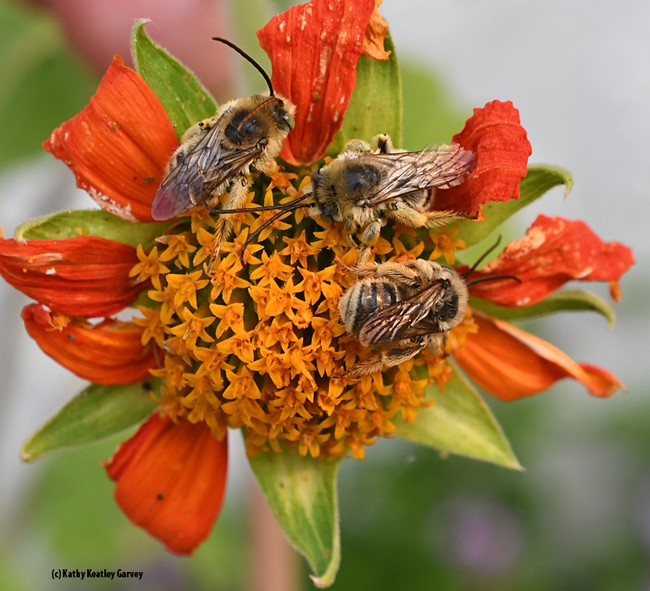
Longhorned bees--Melissodes (possibly M. robustior) slumbering on a Mexican sunflower. (Photo by Kathy Keatley Garvey)
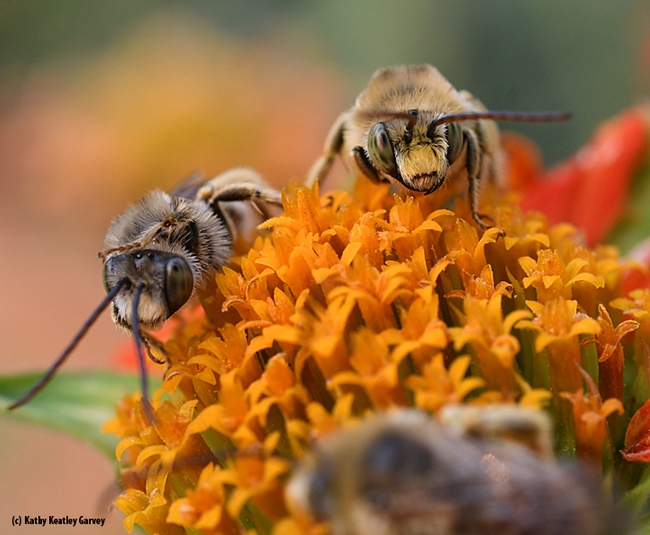
Is it time to wake up? Two male longhorned bees eye the photographer. (Photo by Kathy Keatley Garvey)
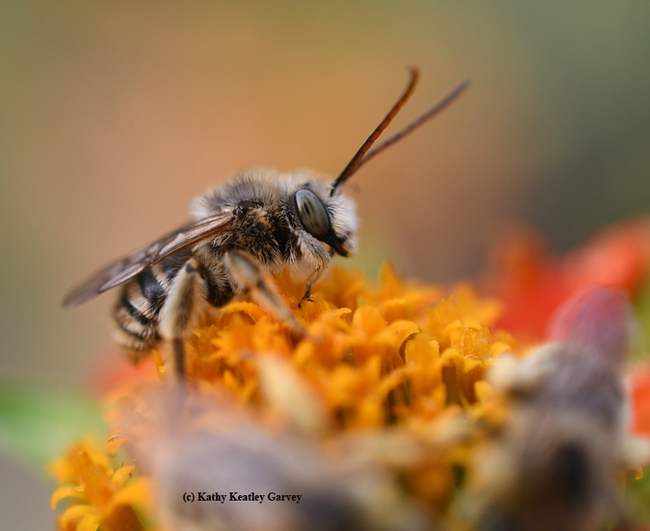
A male longhorned bee, Melissodes, prepares to leave his "bedroom," a Mexican sunflower. (Photo by Kathy Keatley Garvey)
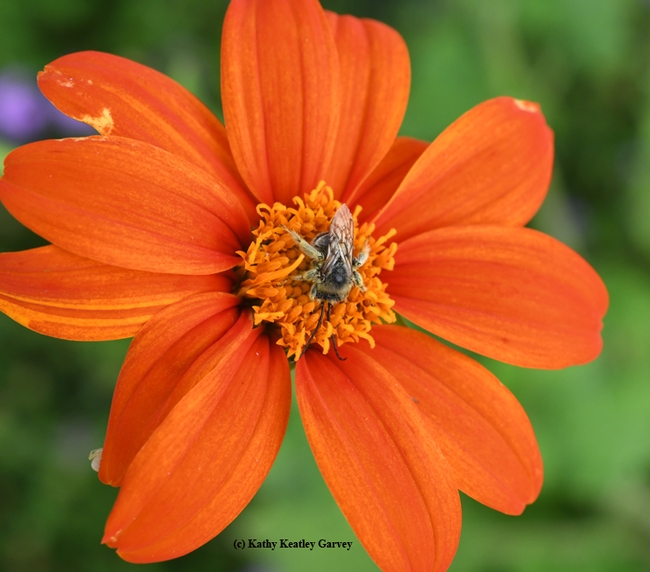
This male longhorned bee is sleeping alone on a Mexican sunflower. (Photo by Kathy Keatley Garvey)